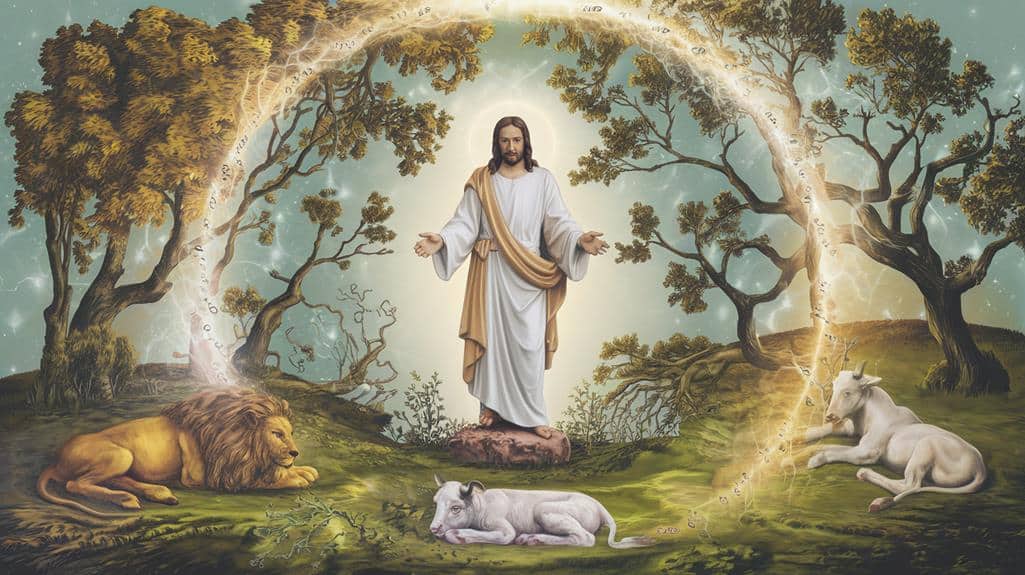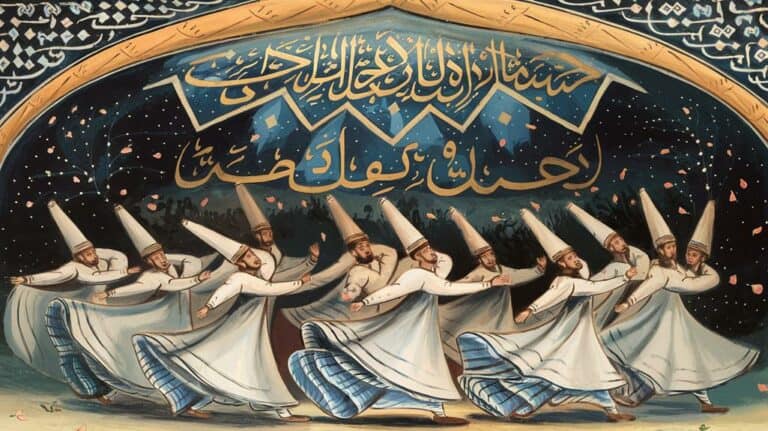Incarnational Mysticism
When you explore the concept of Incarnational Mysticism, you’re invited to see the divine not just as a distant entity, but as an embodied presence in your everyday life. This spiritual framework, rooted in Christian doctrine, suggests that God became flesh in Jesus Christ and continues to be present in all aspects of the physical world. As you commence on this journey, you’ll discover how meditation, contemplation, and a mindful approach to daily activities can transform your relationship with the divine. But what does this mean for your personal transformation and your role in social justice? Let’s uncover how Incarnational Mysticism can reshape your understanding of the sacred and the ordinary.
Origins and Historical Context

Numerous spiritual traditions have contributed to the development of incarnational mysticism, a practice that emerged at the intersection of Eastern and Western mystical thought. You’ll find its roots stretching back to ancient contemplative practices, where seekers endeavored to bridge the divine and the earthly domains.
As you explore deeper, you’ll discover how this unique approach to spirituality evolved through the centuries, drawing inspiration from diverse sources.
In the tapestry of incarnational mysticism, you’ll recognize threads of Neoplatonism, Sufism, and Christian mysticism intertwining with Eastern philosophies. This convergence of ideas gave birth to a profound understanding of the human experience as a vessel for divine expression.
You’re invited to contemplate how incarnational mystics sought to embody the sacred within the mundane, transforming everyday existence into a living prayer.
As you investigate this rich history, you’ll encounter visionaries who dared to challenge conventional beliefs, paving the way for a more holistic approach to spirituality.
Their legacy continues to inspire those who seek to transcend the boundaries between the spiritual and the physical, inviting you to embrace the sacred potential within your own incarnation.
Core Principles and Beliefs
As you explore the core principles and beliefs of incarnational mysticism, you’ll find that this spiritual approach is rooted in the idea that God became embodied in human flesh. This central tenet, encapsulated in the Christian doctrine of the Incarnation, posits that God’s embodiment in Jesus Christ affirms the sacredness of the physical and material world.
Incarnational mysticism emphasizes that God’s love and presence aren’t distant or abstract, but inherently intertwined with human experience and the world around us.
At its heart, incarnational mysticism is about experiencing God through the ordinary and the mundane. It encourages you to seek the divine not in some transcendent domain, but in the midst of life, in your own body and in the world’s beauty. This perspective urges you to listen to your body, to ground your spirituality in human experiences, and to find God in what you know rather than in what you don’t know.
Incarnational mystics prioritize spiritual practices and inner experiences over dogma and doctrine. They believe that true spiritual growth comes from a deep, experiential connection with God, rather than mere adherence to beliefs.
This approach fosters a sense of union with God, where the boundaries between the divine and the human are blurred, and where love, joy, and relationship-building become the essence of spiritual living.
Practices and Techniques

In incarnational mysticism, spiritual practices and techniques are designed to deepen your experiential connection with God, integrating the divine into the everyday aspects of your life. One of the core practices is meditation, where you slow down your thinking process, reducing the intensity of thoughts and bodily sensations. This creates a state of greater stillness, allowing you to connect more intimately with the divine.
Contemplation is another essential technique, often involving the use of scripture or sacred texts. For instance, the spiritual exercises of Ignatius of Loyola guide you through a process of gospel contemplation, where you imaginatively enter scriptural scenes and engage in personal conversations with God. This practice, known as “composition of place,” helps you to draw personal insights and spiritual fruit from the narratives.
Additional practices include austerity, solitude, and the use of the senses to enhance spiritual experience. Techniques like the “Application of the Senses” by Ignatius of Loyola encourage you to use your imagination to see, hear, and feel the presence of God in your daily life.
These practices foster a deeper sense of union with the divine, transforming your everyday experiences into moments of profound spiritual connection. By embracing these techniques, you can cultivate a life where the sacred isn’t just an abstract concept, but a living, breathing reality intertwined with your existence.
Everyday Applications
Embracing incarnational mysticism in your daily life means integrating the divine into every aspect of your existence. This isn’t a compartmentalized spirituality, but a holistic one, where the sacred and the secular are no longer distinct entities. Every action, every interaction, and every thought becomes an opportunity to express and experience the divine.
In your daily routines, you can transform mundane tasks into acts of worship. Whether it’s your job, your interactions with family and friends, or even the simple act of eating, each moment can be infused with spiritual significance. As Richard Foster notes, “everywhere you go is ‘holy ground,’ everything you do is ‘consecrated activity,’ and everything you think and say is ‘sanctified communication'”.
Your work, or your vocation, is a substantive place for incarnational living. It’s here that you produce good in the world and embody the principles of your faith. By linking your spiritual practices with your everyday life, you create a seamless integration where the divine is manifest in every material reality.
In this way, your life becomes a living sacrament, where every aspect of your being—body, mind, and spirit—is aligned with the divine. This isn’t just a theoretical concept, but a lived experience that deepens your connection with God and the world around you.
Contemporary Relevance and Impact

Incarnational mysticism remains profoundly relevant in contemporary life, as it bridges the gap between the spiritual and the mundane. This profound concept, rooted in the idea that God became embodied in Jesus, underscores that the physical world is a manifestation of the Divine. In your daily life, this means recognizing the sacred in every moment and every being, whether it’s the majestic beauty of nature or the intricate complexities of human relationships.
As you navigate the challenges of modern society, incarnational mysticism offers a compelling framework for integrating spirituality and action. It reminds you that your inner journey is inextricably linked with the outer pursuit of justice and peace. Figures like Richard Rohr and Dorothy Day exemplify this integration, showing how deep spiritual experiences can fuel commitment to social justice and the integrity of creation.
This approach encourages you to see your life as a continuous incarnation of God’s love and presence. It invites you to find meaning in the everyday, to heal from pain and injustice through love and compassion, and to understand that your ultimate source and ground isn’t just within yourself, but also in the world around you.
Conclusion
As you commence on the journey of incarnational mysticism, remember that the divine is not just a distant concept, but a living presence in every breath, every gesture, and every encounter. In the depths of your being, the Word has become flesh, calling you to a union with God that transcends the ordinary and infuses the mundane with sacred meaning. Let this realization transform your life, bridging the gap between the sacred and the everyday, and inspiring a profound love and service to the world around you.









